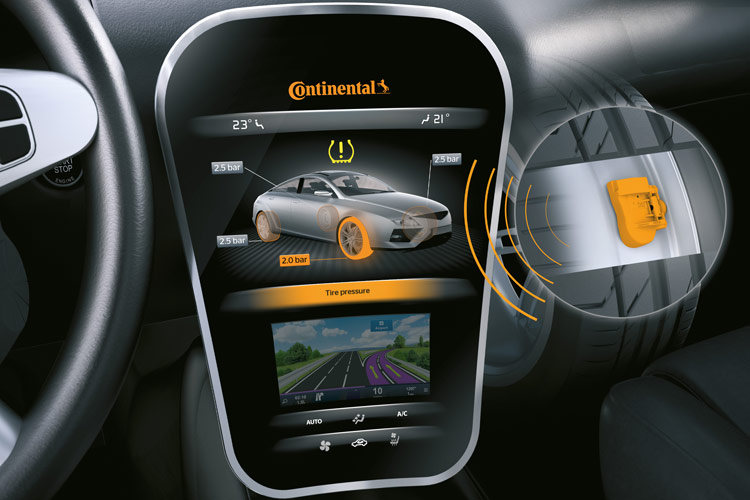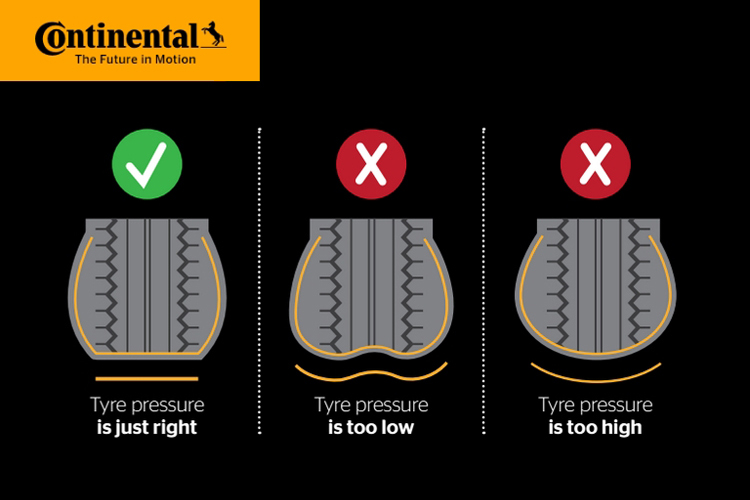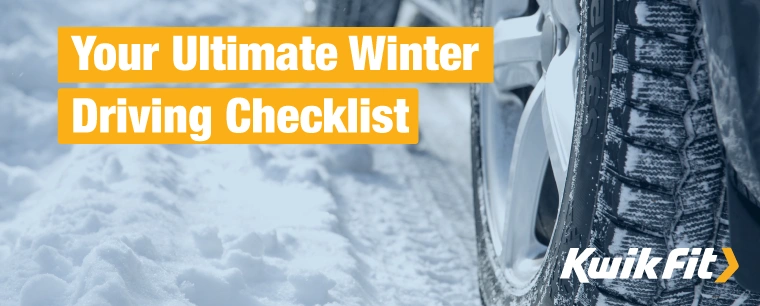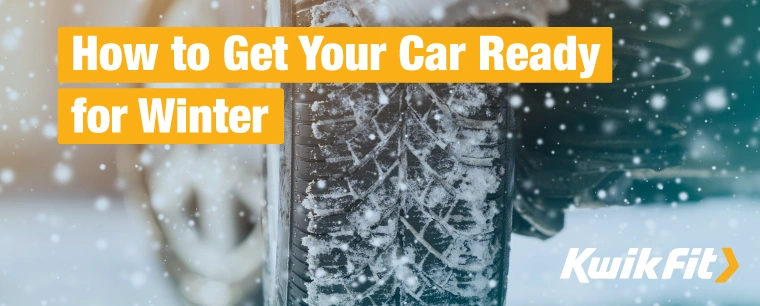Setting off on your holiday? Check your tyre pressures first!
Bradley Jando | Friday 6th August 2021 10:06am
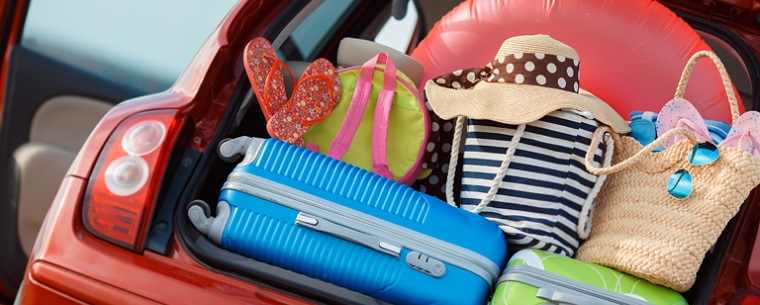
While the weather may keep jumping from hot glorious sunshine to overcast and rainy, the summer holidays are now upon us. Many Kwik Fit customers are thinking about packing up the car, hitting the road, and getting away for a while - forgetting the cares of the world for a couple of weeks. But with so many things to consider such as bags, suitcases, sleeping bags, camping stove, suntan lotion, hats, rain coats, wellies, buckets, spades, food for the cat or the dog (you get the general idea), we can be forgiven for forgetting to think about the ideal pressure in our car’s tyres, can’t we?
It’s easy to simply say ‘yes’, of course, everyone’s busy and we just forget these things, right? With the kids and your loved ones in the car, the answer from Kwik Fit is an unequivocal NO! Ignore your tyre pressures and you wouldn’t forgive yourself if something went wrong while driving, would you?
Don’t let your tyres let you down
At Kwik Fit, when it comes to tyres we’ve seen and heard it all and there’s a misconception among many drivers that you don’t need to bother checking tyres regularly. It’s estimated that around two thirds of all UK drivers don’t check their tyres for wear and tear, or make sure they’re correctly inflated in their everyday life, let alone before they set off on their holiday.
This is especially true of drivers whose vehicles are fitted with Tyre Pressure Monitoring Systems (TPMS). Even if you have TPMS you still need to make sure you regularly check your tyre pressures.
In our latest tyre safety article, we explain not only why it’s so important to check your tyre pressure regularly, but also why it’s crucial to adjust your pressures when your car is fully laden for your holiday.
So why exactly are tyre pressures so important?
Simple. It’s mainly and most importantly about you and your family’s safety.
It’s a well known fact in the automotive and tyre industries that under-inflated tyres affect your car’s handling and braking, and not in a positive way. Under-inflated tyres have a direct impact on how quickly your vehicle can come to a full stop when braking. The result is often significantly longer stopping distances. In wet weather conditions this can be up to four car lengths.
Stopping distances are also influenced by whether your car has premium or budget tyres fitted. Four car lengths is clearly an unacceptable distance to travel when you need to stop quickly and safely - such as on a fast motorway, or if a child steps out in front of you as you’re driving around your holiday location. The consequences are frightening and all too obvious.
Over-inflated tyres, on the other hand, dramatically increase the risk of high-speed tyre blow-outs – with consequences none of us want to ever have to deal with. Not a summer goes by where we don't hear about UK holiday makers both at home and abroad becoming victims of unforeseen traffic accidents, particularly on winding country roads.
Saving you money
But it’s not just safety to consider, it’s also about saving money.
It’s a proven fact that incorrectly inflated tyres wear out unevenly, and as a result require replacing more regularly. It’s also true that if your tyres are under-inflated, your car will use more fuel, and as a result emit more CO2. That’s a lose-lose both ways, and who wants that?
For these reasons, the Department for Transport and leading tyre manufacturer Continental recommends that you undertake monthly tyre pressure checks, even for cars fitted with TPMSs.
So why do heavy loads change the way your car handles?
It’s a good question. Let’s say that your tyres were correctly inflated to the standard “un-laden” pressure values before you set off on your holiday (because you regularly check them, right?). By the time you’ve added a few hundred extra kilograms of luggage, bikes, equipment, and general stuff, as well perhaps as the dogs, a couple of adults, and some kids, you’ll be looking at around an additional half tonne of additional weight - perhaps even more.
That extra weight changes things dramatically for your tyres. Why? Because the rubber compounds are slightly flexible, the tyres expand and – instead of being correctly inflated – they start behaving as if they’re under-inflated.
Remember, under-inflated tyres affect your car’s handling, as well as its ability to stop quickly in an emergency. You’ll also waste fuel, so it’s vital to adjust your tyres to the “laden” weight pressure before you set off on holiday. The money you save on fuel is better served being spent on your holiday.

Where can you find tyre pressure values?
Look up the tyre pressure values in your car’s user manual. They’re often also printed on the inside of your fuel cap, and inside the driver’s door. You’ll typically find two figures; one’s for normal ‘un-laden’ use, and the other – a higher figure – is for when your car is laden.
How do you adjust tyres to the laden pressure?
Typically, the easiest place to top up your tyre pressures is at your local service station, and this can be done for a relatively small charge. Simply remove the valve dust cover from each tyre, and attach the air hose. The hose also measures tyre pressure. Then, set the correct tyre pressure according to the vehicle manufacturer’s advice. Either top up or release air until the pressures are correct for all wheels at the laden weight.
If you’re not sure you’ve got it right, leading tyre brand Continental’s advice is “don’t leave it to chance, seek professional advice”. Continental is at the forefront of raising awareness about road safety – part of its Vision Zero initiative. Our tyre experts can provide you with help and advice, and will take you through all your options. Contact your local centre today! Find your nearest Kwik Fit centre here.
Any facts, figures and prices shown in our blog articles are correct at time of publication.
Featured Articles
Is Your Car Battery Ready for Winter?
Monday 11th November 2024
Is the UK on the verge of ‘the coldest winter for 50 years?’ Even if El Niño doesn't hit the UK this winter, reduce the risk of a winter breakdown by making sure your car battery is winter-ready.
Your Ultimate Winter Driving Checklist
Monday 31st October 2022
Driving in the colder months presents many challenges. Breakdowns are far more common in winter, so make sure you’re prepared with these essentials.
How to Get Your Car Ready for Winter
Wednesday 28th September 2022
Winter can be a harsh season for your car but planning ahead by carrying out some basic maintenance and packing some essential kit should help you avoid a winter breakdown.

